Art & Exhibitions
Henri Matisse, Collector? See How the Artist’s Favorite Possessions Inspired His Groundbreaking Work
The hotly anticipated "Matisse in the Studio" opens tomorrow at the Royal Academy of Arts.

The hotly anticipated "Matisse in the Studio" opens tomorrow at the Royal Academy of Arts.

Naomi Rea

Not everyone knows that Henri Matisse was a great collector of objects, but any true connoisseur of his work will find many of the objects that are on view from tomorrow at London’s Royal Academy of Arts eerily familiar.
The exhibition “Matisse in the Studio,” which has been in the works for four years, will present 65 of the French artist’s paintings, sculptures, drawings, and cutouts—shown for the first time alongside a selection of 35 objects from his eclectic personal collection.
“It’s always interesting to discover what an artist collects; an artist’s collection is different from an ordinary person’s in that it is really used as a stimulus for artistic creation,” the RA’s Ann Dumas, one of the curators of the exhibition, told artnet News.
The show reveals the objects in the painter’s collection as a key source of inspiration for his oeuvre. While some appear in his work directly as subject matter, others can be seen as a more subtle jumping-off point for the artist.
“He used the different kinds of things he collected in very different ways in his work, often engaging with them over long periods of time; his collection had enormous personal, emotional, and artistic significance for him,” Dumas explained.
Selected by the painter for their visual appeal, none of the objects on display are of museum quality or significant material value. Many have been loaned from the Matisse Museum in Nice, while others were borrowed from private collections, including that of Matisse’s descendants.
Dumas told artnet News that her real curatorial challenge was not in finding these objects, but in getting permission to borrow the paintings which complemented them from museums all over Europe and America, which was no easy feat.
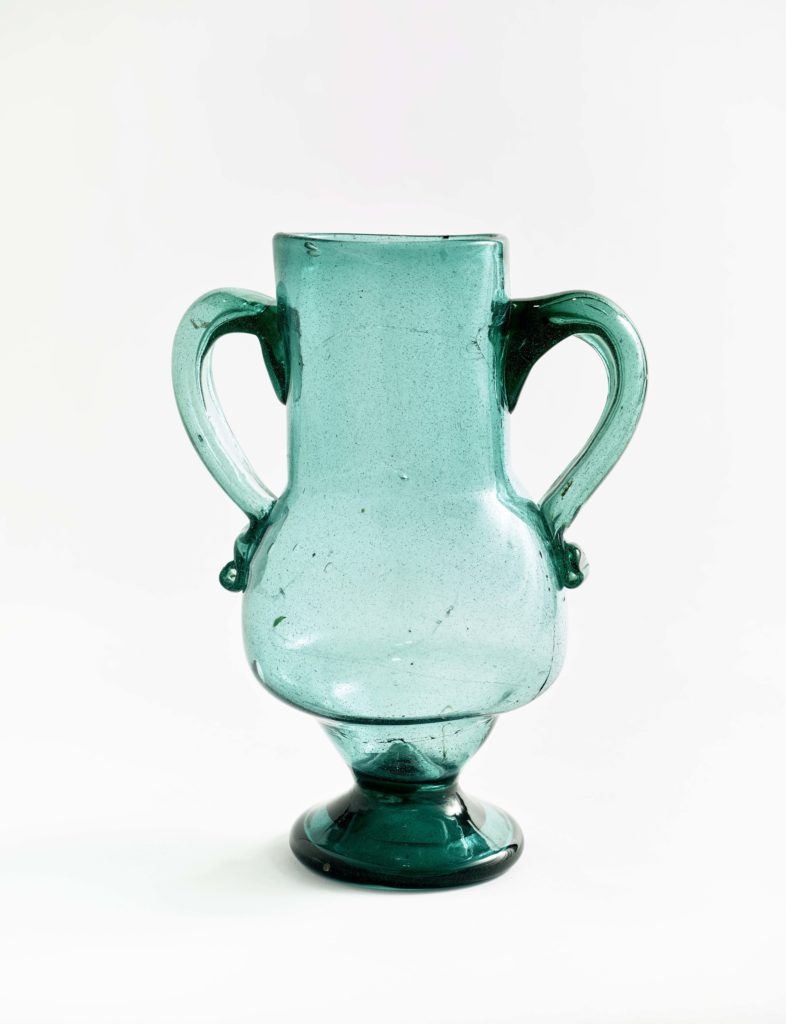
Vase, Andalusia, Spain, early 20th century. Former collection of Henri Matisse. Musée Matisse, Nice. Bequest of Madame Henri Matisse, 1960. Photo ©François Fernadez, Nice.
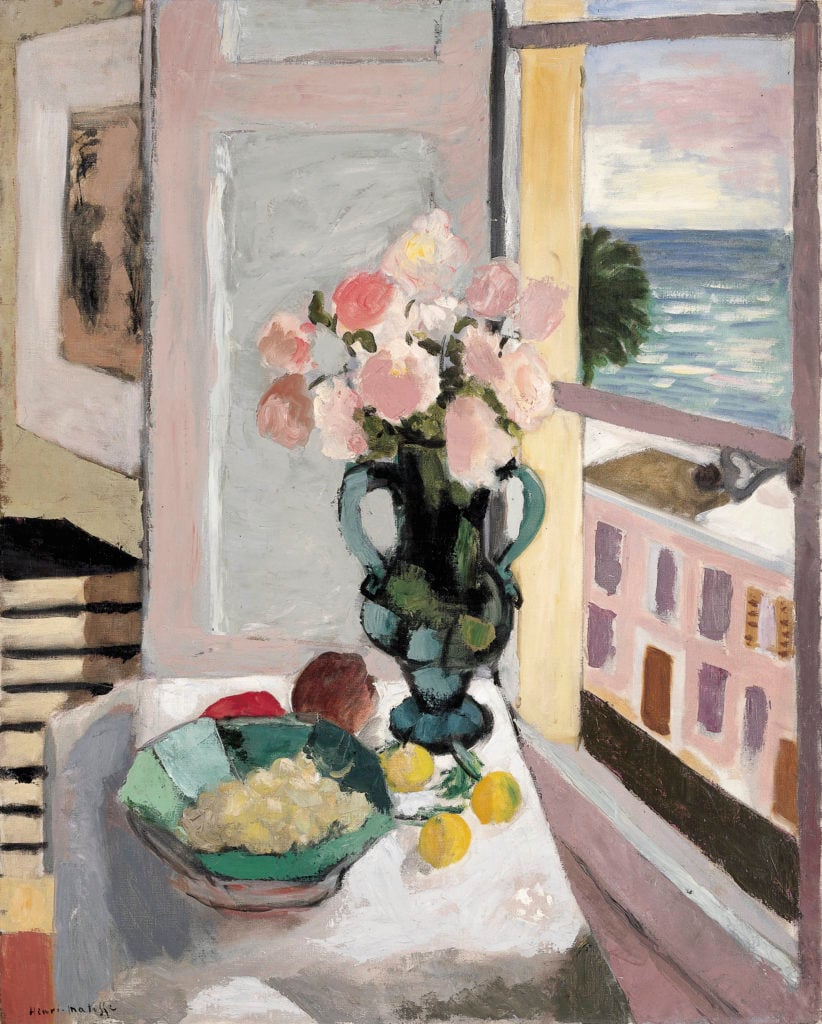
Henri Matisse, Safrano Roses at the Window (1925). Photo ©Private collection, ©Succession H. Matisse/DACS 2017.
As the clutter of Matisse’s studio is not the aesthetic de rigeur at the RA, instead of reproducing the artist’s messy studio in situ, curators have opted to pepper large photographs of the artist living surrounded by these objects throughout the exhibition.
“We didn’t want to make the installation too spare because we wanted to get a sense of the sort of richness of the way that he lived,” she said. Some of these photos were taken by Henri Cartier-Bresson in the final part of the artist’s life when Matisse was living in the Hôtel Régina just outside Nice.
“Matisse in the Studio” is arranged around five thematic sections, although his collection can be loosely understood in three: ordinary French domestic objects, decorative arts from North Africa, and Central and Western African sculptures and masks.
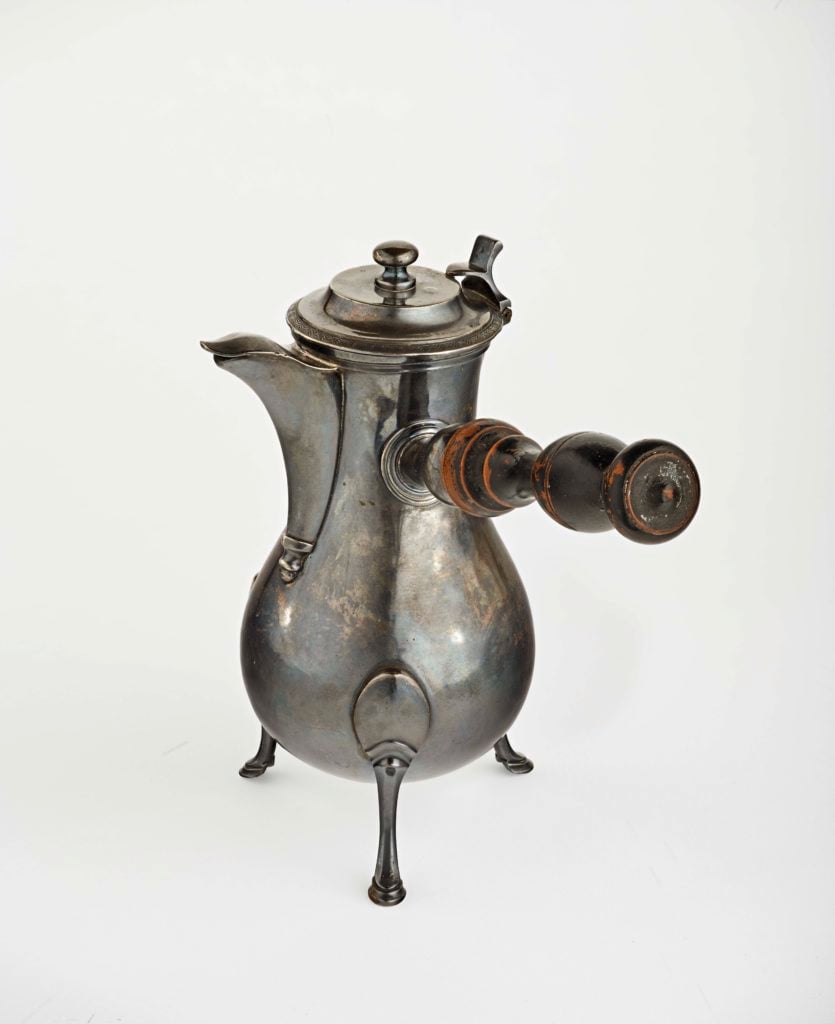
Silver cafetière, France, early 19th century. Musée Matisse, Nice. Former collection Henri Matisse. Bequest of Madame Henri Matisse, 1960.
Among domestic items, such as a familiar glass vase, a pewter jug, and patterned teacups, one particular object—a chocolate pot—crops up time and time again in his work.
“We have one particularly interesting thing in the show: a sheet of paper that has never been exhibited before, on which Matisse was experimenting with color,” Dumas told artnet News. “It’s just a whole lot of little blobs of color, but if you look closely, you’ll see a little tiny drawing of the chocolate pot under each one, so I think he was really quite obsessed with it.”
The curator confessed she found one of the most interesting parts of his collection to be the objects from Western and Central Africa, which he bought from dealers in Paris starting around 1906. Matisse used these African sculptures and masks as inspiration for his art in a much more conceptual way than the domestic objects.
“You can see he is learning this notion of abstraction from African art and moving away from conventional Western notions about representation,” Dumas said.
Inspired by the expressions in African art, Matisse and contemporaries like Picasso began to move beyond the rich detail of the Western tradition towards the simplified features found in African sculpture and masks.
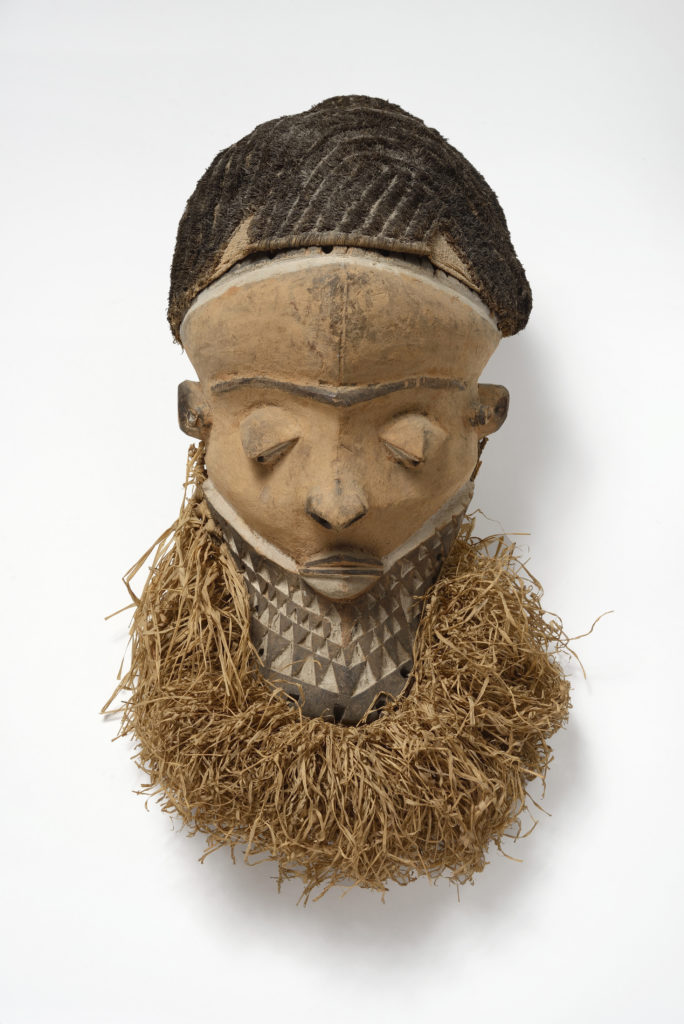
Muyombo mask, Pende region, Democratic Republic of the Congo, 19th-early 20th century. Former collection of Henri Matisse. Private collection. Photo Jean-Louis Losi.
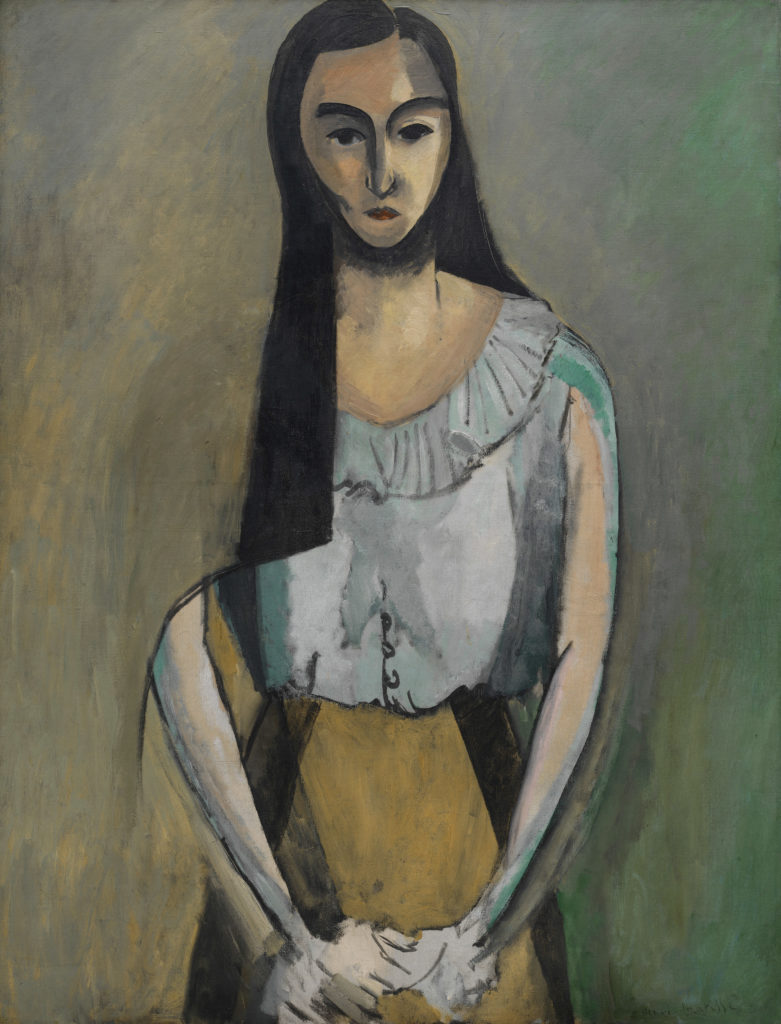
Henri Matisse, The Italian Woman, (1916). The Solomon R. Guggenheim Museum, New York. By exchange, 1982. Photo: ©The Solomon R. Guggenheim Foundation/Art Resource, NY. ©Succession H. Matisse/DACS 2017.
He also collected decorative arts such as hangings, furniture, and textiles from North Africa. Objects from the Islamic world, such as an intricate plain weave tapestry, influenced his Nice period in the 1920s, when he was creating his exotic “odalisques.”
The luxuriant figures diversely posed against richly patterned fabrics and decorative screens evidence his continuing exploration of alternatives to Western realism found in these more abstract designs.
While it was the peculiar aesthetic of these ordinary objects that drew Matisse to collect them, it was his visionary genius that saw to it that echoes of these mortal objects will live on forever in his art.
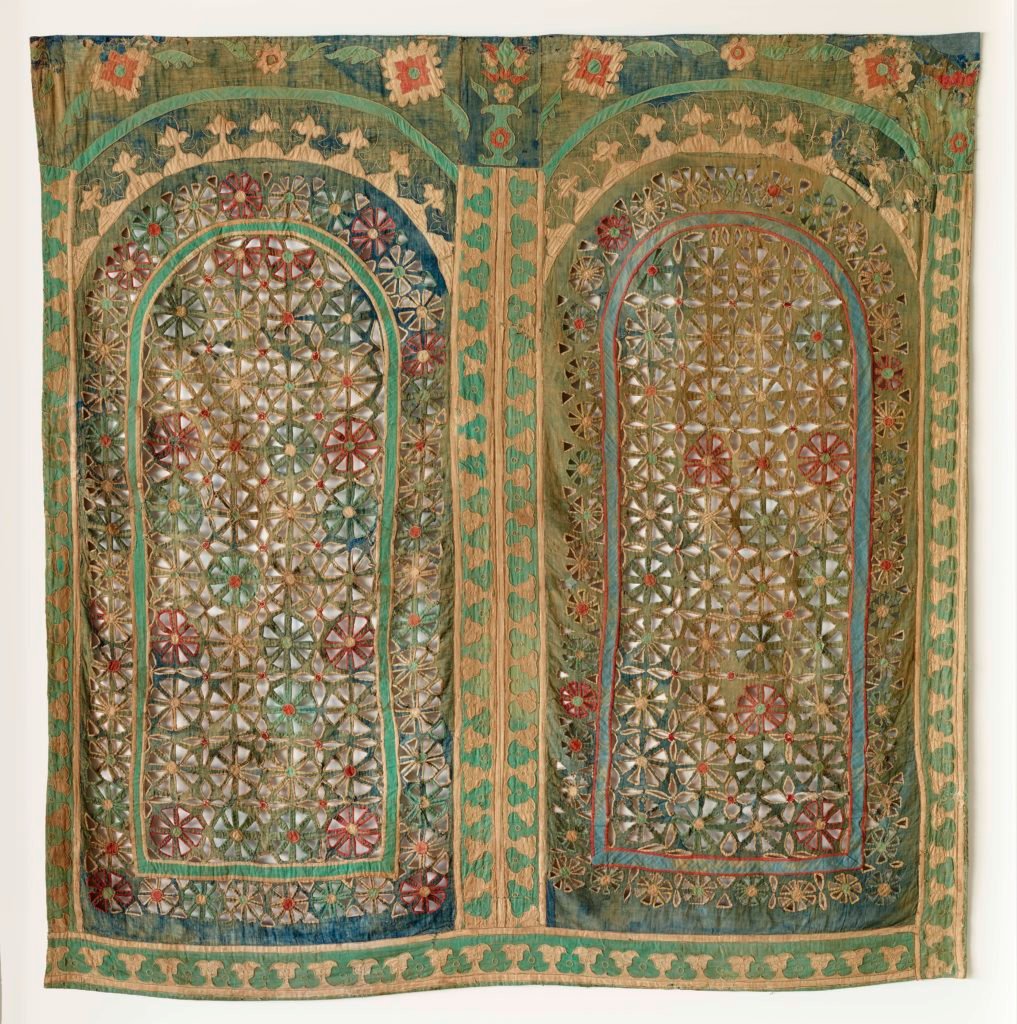
Haiti, North Africa, late 19th-early 20th century. Cotton plainweave cut and appliquéd to bast fiber cloth. Former collection of Henri Matisse. Private collection, on loan to Musée Matisse, Nice. Photo ©François Fernandez, Nice.
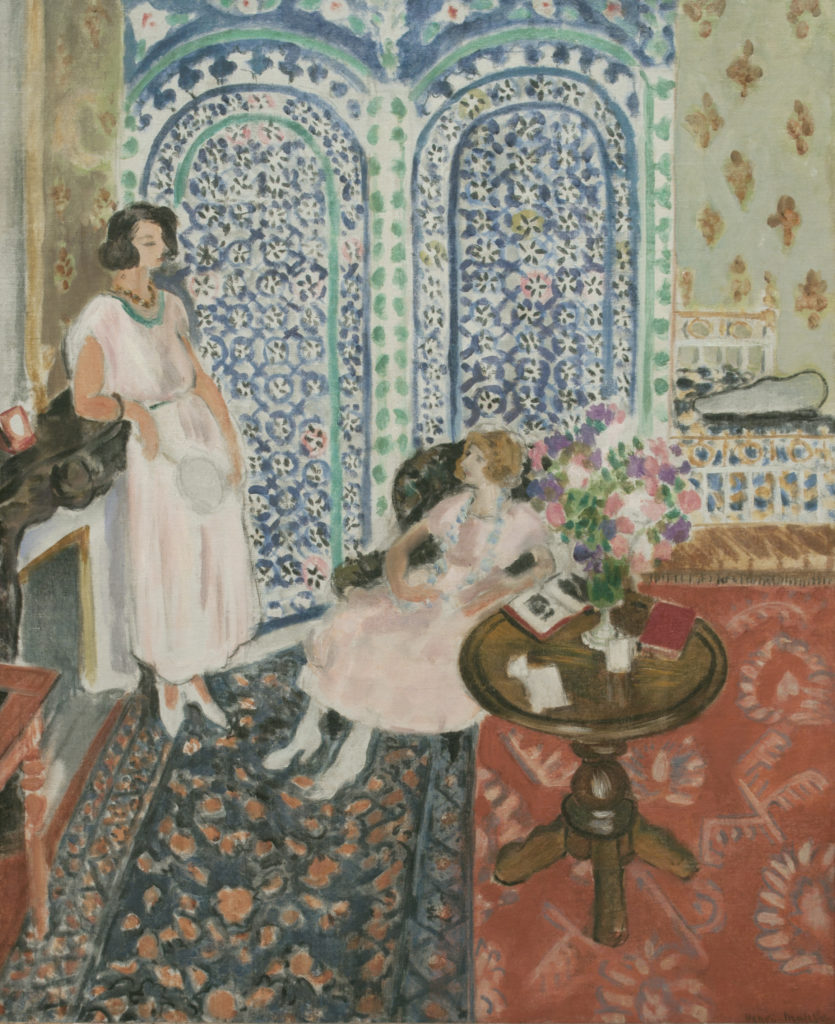
Henri Matisse, The Moorish Screen (1921). Philadelphia Museum of Art. Bequest of Lisa Norris Elkins, 1950. Photo ©Philadelphia Museum of Art/Art Resource, NY.
“Matisse in the Studio” is on view at the Royal Academy of Arts, London, from August 5 – November 12, 2017.